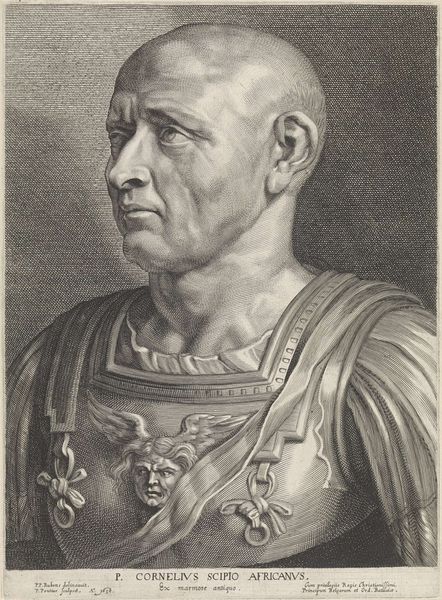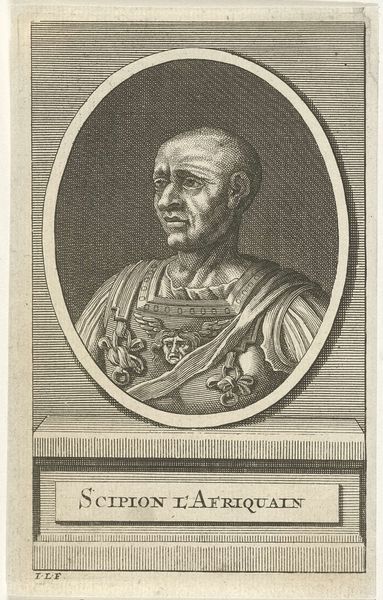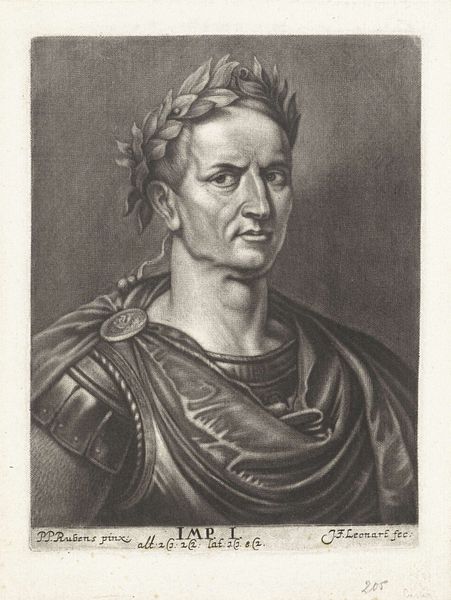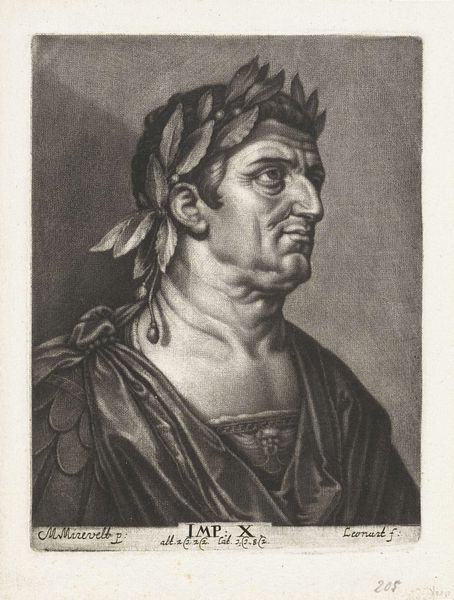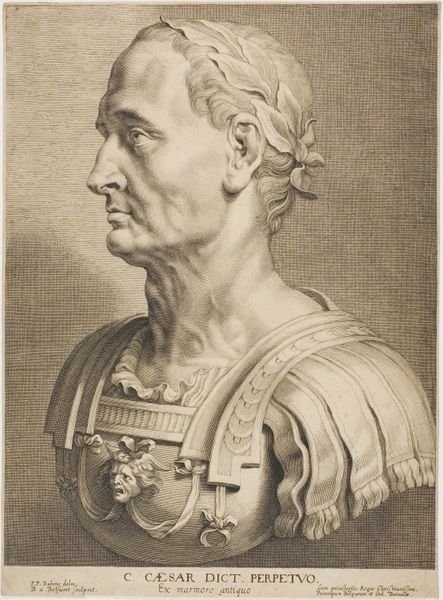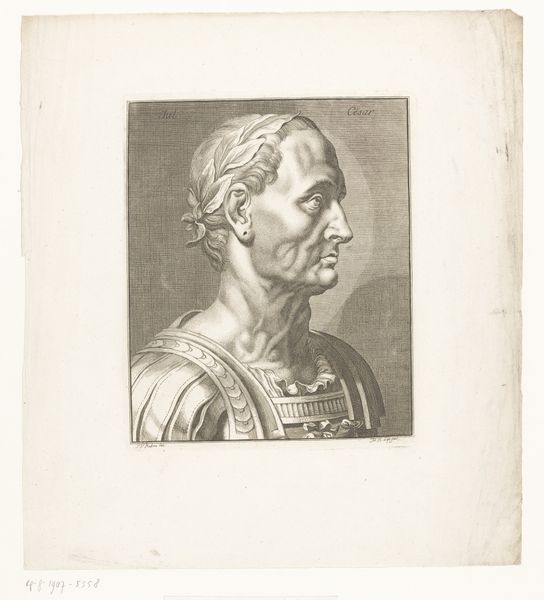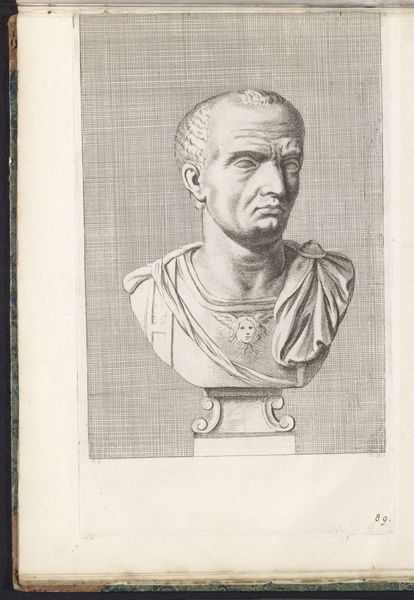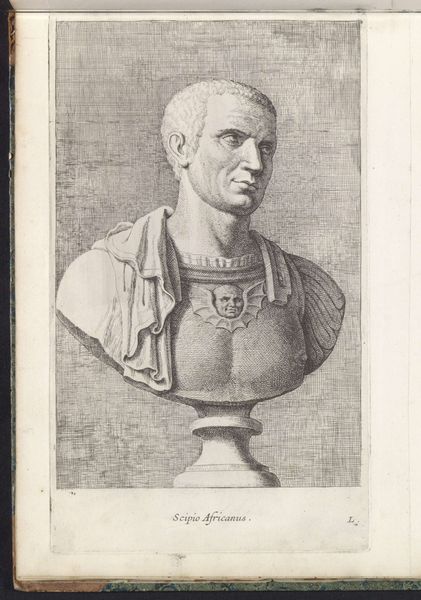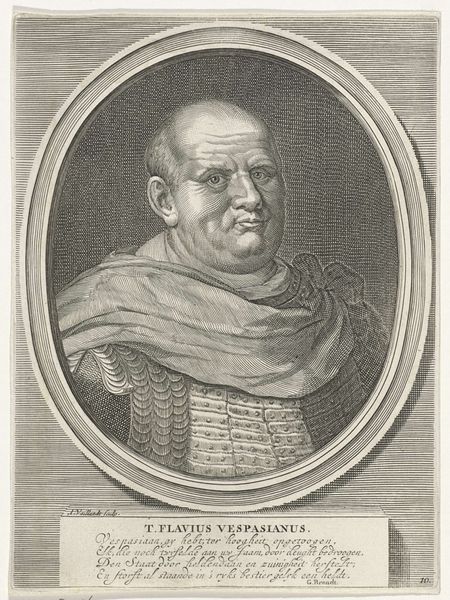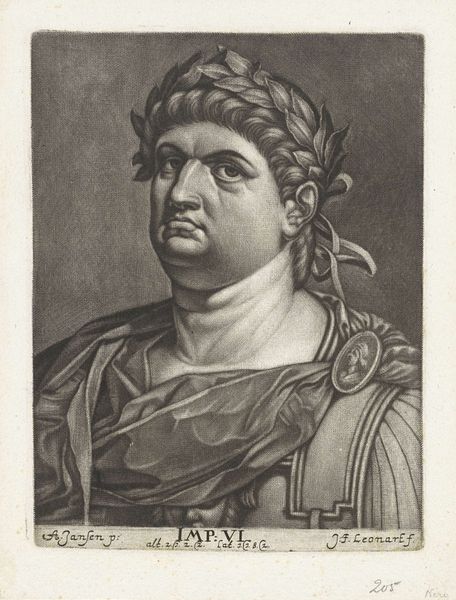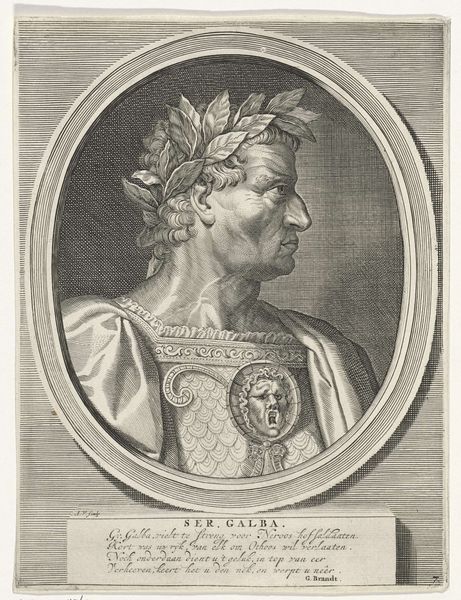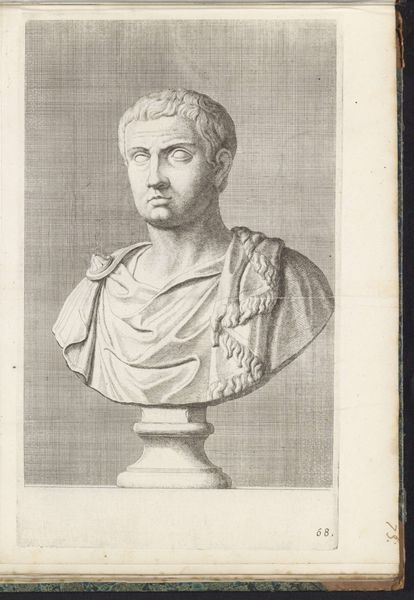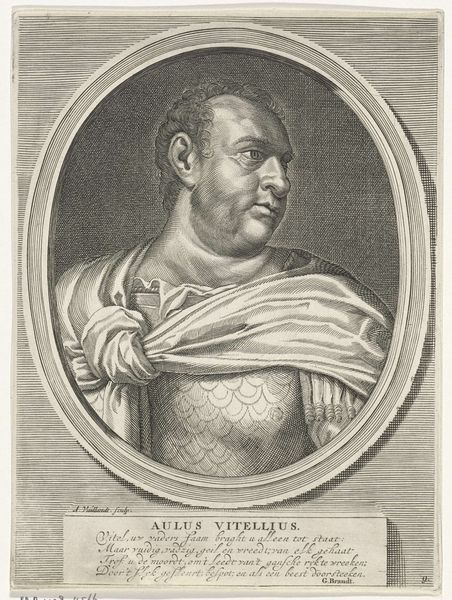
metal, engraving
#
portrait
#
metal
#
greek-and-roman-art
#
old engraving style
#
caricature
#
classical-realism
#
pencil drawing
#
portrait drawing
#
history-painting
#
engraving
Dimensions: height 170 mm, width 135 mm
Copyright: Rijks Museum: Open Domain
Curator: This is a portrait engraving of Publius Cornelius Scipio Africanus, rendered by Jan de Bisschop between 1666 and 1671. Editor: There's an intensity to his gaze, a formidable air even though it’s a somewhat detached, classical depiction. It almost has the effect of a caricature—something severe is captured. Curator: It's interesting you say caricature, because De Bisschop was meticulous in studying ancient sculptures; we can trace the line and cross-hatching techniques typical of the engravings from that time. Think of the tools required to meticulously capture the contours of a marble bust. Editor: I see your point, it’s in the careful craft, yet the very act of rendering such a commanding Roman figure begs the question of its purpose during that period. The act of idealizing classical masculinity speaks to cultural politics in 17th century Holland. How do we unpack this celebration? Curator: We have to look at it through the lens of access. De Bisschop, as a lawyer and amateur artist, would have been part of a social circle that admired classical virtues and histories. The means to produce and circulate such images reflect particular labor and its role in constructing cultural ideas. Editor: I’m also wondering, who were these images circulating amongst? Was it an exclusive audience affirming their status? Because ultimately, we need to think of the subjects and the systems of power their imagery reinforces, which is obviously the subjugation by an empire. Curator: Definitely not for mass consumption! The material constraints and skill involved positioned these engravings as coveted commodities. Editor: I find that such reproductions, as this engraving, serve as potent ideological vessels. Despite its intricate craftsmanship, this depiction normalizes specific historical narratives and might encourage the beholder to either celebrate or deconstruct, from a contemporary standpoint. Curator: Considering that, the engraving itself then becomes a document that illustrates evolving tastes and critical approaches over centuries. Editor: Precisely! I think we have both highlighted interesting considerations from labor practices to colonial legacies embedded in an image.
Comments
No comments
Be the first to comment and join the conversation on the ultimate creative platform.
